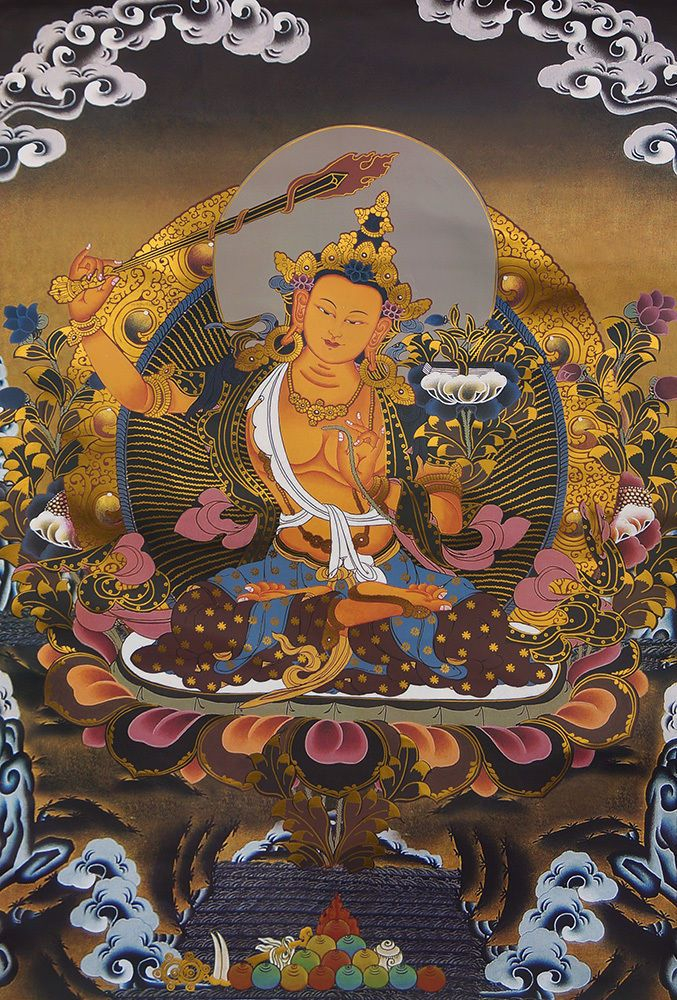Manjushri

In Mahayana Buddhism, Manjushri is a bodhisattva associated with praj (wisdom). In Sanskrit, his name means "Gentle Glory." He is the embodiment of transcendent wisdom. Manjushri is also known as Manjusrikumarabhuta, which means "Manjushri, Still a Youth" or, less literally, "Prince Manjushri." Manjushri is also known as Manjughosa.
Buddhist theologians identified Manjushri as the oldest Bodhisattva mentioned in the ancient sutras, which elevates him to a position of high honor. He resides in one of the Buddhist pantheon's two purest lands. As he progresses toward full Buddhahood, his name comes to mean "Universal Sight."
Manjushri is depicted as a male bodhisattva wielding a flaming sword in his right hand, representing the realization of transcendent wisdom that cuts down ignorance and duality. The scripture supported by the padma (lotus) held in his left hand is a Prajpramit stra, representing his attainment of ultimate realization through the blossoming of wisdom. Manjushri is frequently depicted riding on a blue lion or sitting on lion skin. This represents the use of wisdom to tame the mind, which is compared to riding or subduing a ferocious lion.
Manjushri's sword is sometimes replaced with a ruyi scepter in Chinese and Japanese Buddhist art, particularly in depictions of his Vimalakirti Sutra debate with the layman Vimalakirti. The first Chinese representation of a ruyi, according to Berthold Laufer, was in an 8th-century Manjushri painting by Wu Daozi, where it was held in his right hand instead of the usual sword. A ruyi was occasionally represented as a Padma with a long stem curved like a ruyi in subsequent Chinese and Japanese paintings of Buddhas.










